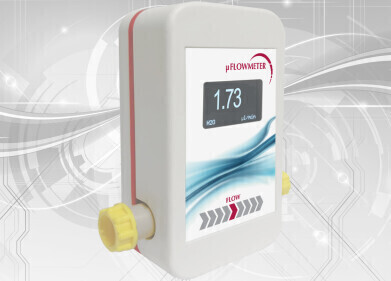LC-MS
How is Chromatography Used in Phosphoproteomics?
Sep 28 2018
As technology improves analytical techniques get better. Instrumentation gets more selective and increases in computer power means analysis becomes quicker and able to handle more data. Better peak resolutions and lower limits of detection are two of the benefits found in chromatography in recent years. One area where this improvement in chromatographic analysis has had an impact is in phosphoproteomic analysis. But what is phosphoproteomics besides a great scrabble word?
Start with proteomics...
Proteomics is the study of proteomes – a proteome is simply a set of proteins that are made in an organism or system. So, we can have a proteome of a species, for example humans, or the proteome of an organ in the body such as a kidney. The proteome is a constantly changing – with cells in an organ differing and changing over time.
Proteomics is used to investigate many aspects of protein activity. Where are proteins expressed, rate of their production and how proteins are involved in metabolic pathways. But by studying the proteome rather than individual proteins, researchers can get a better overview of what happens inside a body or organ. And one aspect of proteomic research is in post-translational modification.
… add on a phosphoryl
Peptide phosphorylation is the addition of a phosphoryl group - PO32- - to an amino acid such as serine or tyrosine. Phosphorylation is an extremely important reaction that affects how proteins are modified and therefore how those proteins function in cells.
So, phosphoproteomics is simply a specific type of proteomics that deals with phosphorylated proteins. The process considers important cellular processes including the regulation of cell cycles, cell signalling from a cell’s exterior to its interior and the targeting of specific proteins.
Chromatography plays its part
Phosphorylated proteins are found in a lower abundance than non-phosphorylated proteins, and so the equipment used for proteomics has had to be adapted. For phophoproteomics, the first step involves using antibodies to bind to the peptides and then separating the peptides using metal oxide affinity chromatography (MOAC) to enrich the peptide sample, allowing for an easier assay.
Liquid chromatography with tandem mass spectrometry (LC-MS/MS) is used for phosphoproteomics, alongside MOAC as techniques to enrich the phosphorylated peptides. The use of chromatography to analyse peptides is discussed in the article, Enhanced Sample Preparation: Precision Peptide Mapping and Quantitation Using UHPLC and Mass Spectrometry.
Events
May 11 2025 Vienna, Austria
May 18 2025 Tempe. AZ, USA
May 21 2025 Birmingham, UK
Jun 01 2025 Baltimore, MD, USA
Jun 15 2025 Bruges, Belgium














